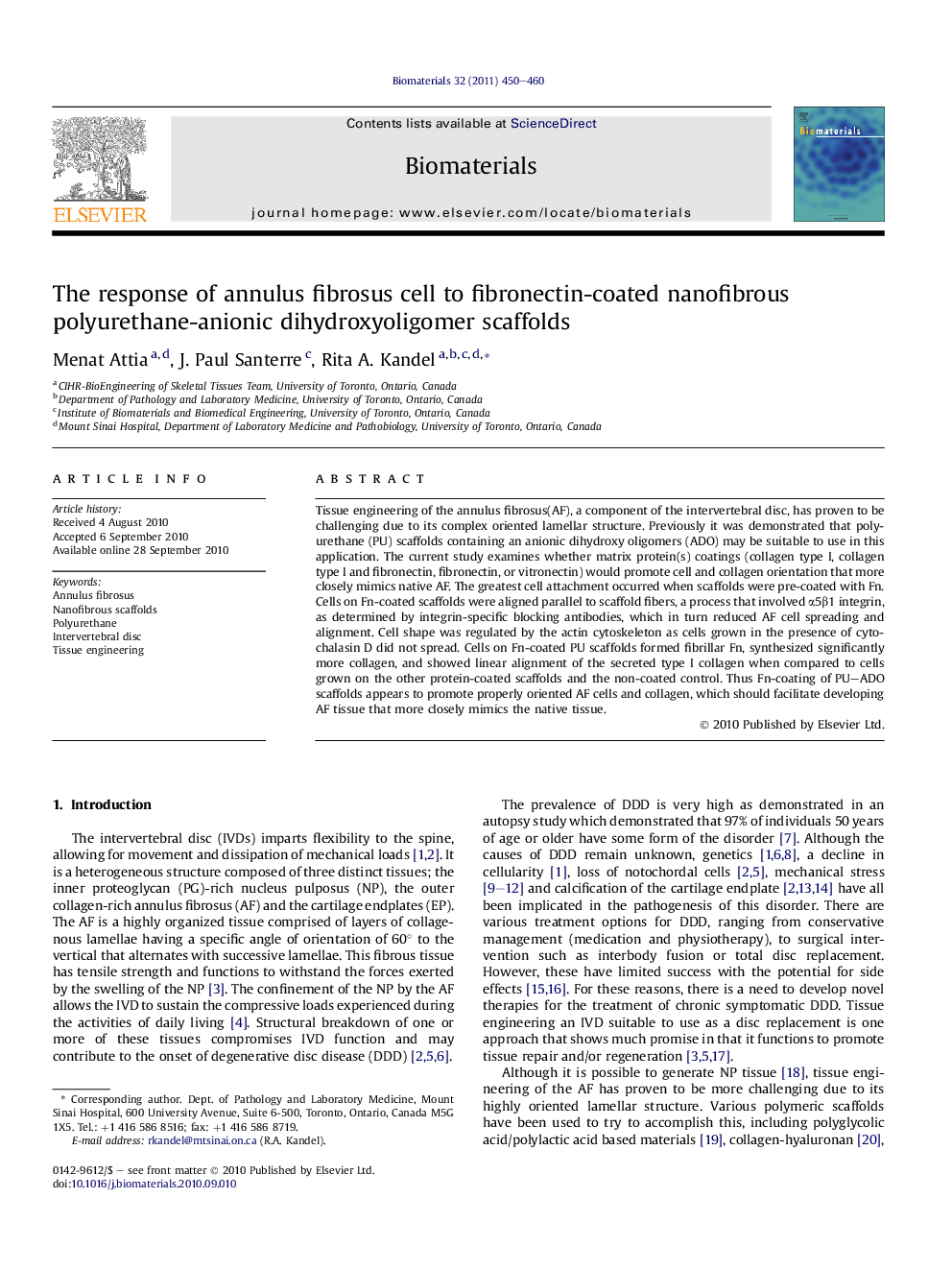| کد مقاله | کد نشریه | سال انتشار | مقاله انگلیسی | نسخه تمام متن |
|---|---|---|---|---|
| 8281 | 584 | 2011 | 11 صفحه PDF | دانلود رایگان |

Tissue engineering of the annulus fibrosus(AF), a component of the intervertebral disc, has proven to be challenging due to its complex oriented lamellar structure. Previously it was demonstrated that polyurethane (PU) scaffolds containing an anionic dihydroxy oligomers (ADO) may be suitable to use in this application. The current study examines whether matrix protein(s) coatings (collagen type I, collagen type I and fibronectin, fibronectin, or vitronectin) would promote cell and collagen orientation that more closely mimics native AF. The greatest cell attachment occurred when scaffolds were pre-coated with Fn. Cells on Fn-coated scaffolds were aligned parallel to scaffold fibers, a process that involved α5β1 integrin, as determined by integrin-specific blocking antibodies, which in turn reduced AF cell spreading and alignment. Cell shape was regulated by the actin cytoskeleton as cells grown in the presence of cytochalasin D did not spread. Cells on Fn-coated PU scaffolds formed fibrillar Fn, synthesized significantly more collagen, and showed linear alignment of the secreted type I collagen when compared to cells grown on the other protein-coated scaffolds and the non-coated control. Thus Fn-coating of PU–ADO scaffolds appears to promote properly oriented AF cells and collagen, which should facilitate developing AF tissue that more closely mimics the native tissue.
Journal: Biomaterials - Volume 32, Issue 2, January 2011, Pages 450–460